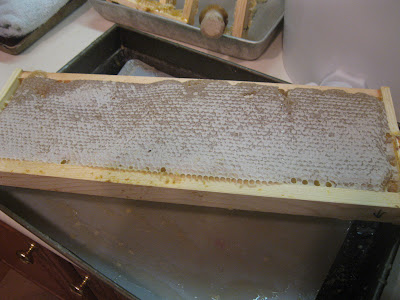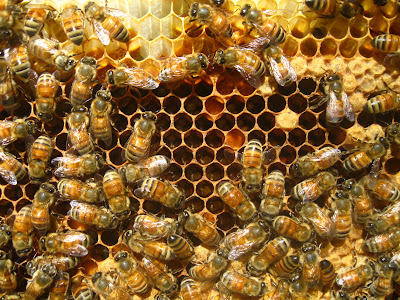Yesterday was my first date this year with the solar wax melter. I set it out before I left of work and when I returned at the end of the day, the wax had all melted and filtered through the paper towel. I couldn't find one of my industrial strength rubber bands and the flimsy rubber band I used had popped during the process (see below)

But this wax from Lenox Pointe is light and beautiful. The advantage of foundationless frames is that all new wax from honey combs (not just capping wax) melts to look like this. Brood wax is always darker and not as pretty - but wax from comb holding honey is gorgeous.

Here the disk is popped out and sitting on a paper towel.

Happy with my first date, I balled up the cleaned wax from the Stonehurst four frame harvest and set the wax melter up to work again today.

Sometimes the melting wax wicks down through the paper towel and accumulates on the foil below the container. I found a new container with more surface area - I'm hoping this will be an even better result with less wicking.


But this wax from Lenox Pointe is light and beautiful. The advantage of foundationless frames is that all new wax from honey combs (not just capping wax) melts to look like this. Brood wax is always darker and not as pretty - but wax from comb holding honey is gorgeous.

Here the disk is popped out and sitting on a paper towel.

Happy with my first date, I balled up the cleaned wax from the Stonehurst four frame harvest and set the wax melter up to work again today.

Sometimes the melting wax wicks down through the paper towel and accumulates on the foil below the container. I found a new container with more surface area - I'm hoping this will be an even better result with less wicking.












































